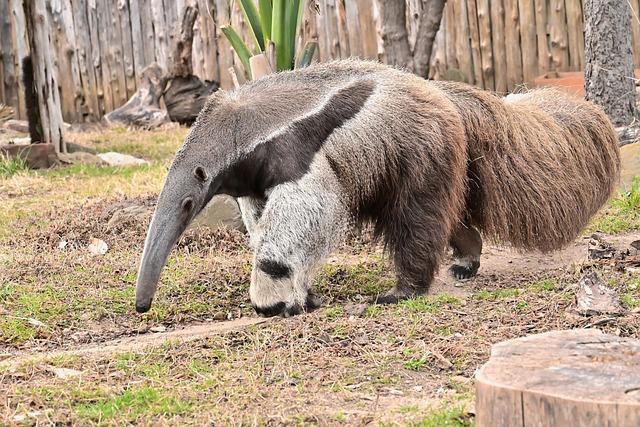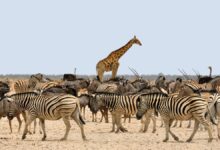Anteater Wonders: A Comprehensive Guide to Behavior, Habitat, and Adaptations

Anteaters, fascinating creatures known for their long snouts and unique feeding habits, play a crucial role in maintaining the balance of ecosystems.
Table of Contents
Scientific Name
Anteaters belong to the order Pilosa and are further classified into three families: Myrmecophagidae, Cyclopedidae, and Vermilingua. The name ‘Myrmecophagidae’ stems from the Greek words ‘myrmeco,’ meaning ant, and ‘phagein,’ meaning to eat. This scientifically chosen name reflects their primary diet of ants.
Types
There are four main types: the Giant Anteater, the Silky Anteater, the Northern Tamandua, and the Southern Tamandua. Each species has distinct characteristics, from size to fur texture, making them uniquely adapted to their environments.
Evolution
The evolutionary history of anteaters dates back millions of years. Adaptations such as elongated snouts and powerful claws evolved to meet the challenges of extracting ants and termites from their nests.
Behavior
Anteaters are generally solitary animals with specific behaviors tailored to their feeding habits. Their keen sense of smell and sharp claws aid in locating and extracting insects from the ground. Factors like environmental conditions influence their daily routines.
Habitat
Anteaters are found in various habitats, including grasslands, forests, and savannas. The geographic distribution of each species varies, with some preferring tropical climates and others adapting to more temperate regions.
Diet
A key aspect of anteater biology is their specialized diet. With tongues that can extend up to two feet, they consume thousands of ants and termites daily. This unique feeding habit contributes to their ecological significance.
Predators and Threats
While adult anteaters face threats from natural predators like jaguars and pumas, human-induced dangers pose a more significant risk. Habitat loss, road accidents, and illegal wildlife trade contribute to declining anteater populations.
Reproduction, Babies, and Lifespan
Anteaters reproduce through a single birth per gestation. Young anteaters, called pups, cling to their mothers’ backs for protection. The lifespan of anteaters varies among species, with some living up to 14 years in captivity.

Population Trends
Despite their importance in ecosystems, anteater populations are under threat. Conservation efforts are vital to ensure their survival, considering the impact of deforestation and climate change on their habitats.
Significance of Anteaters in Ecosystems
They play a crucial role in controlling insect populations, particularly ants and termites. Their foraging behavior helps maintain a balance in ecosystems, preventing pest outbreaks and promoting biodiversity.
Conservation Efforts
Numerous initiatives worldwide aim to protect anteaters and their habitats. Raising public awareness and supporting conservation organizations are integral to ensuring the survival of these unique creatures.
Conclusion
In conclusion, these creatures, with their distinct characteristics and ecological importance, warrant our attention and protection. Understanding their behaviors, habitats, and the challenges they face is crucial for fostering a harmonious coexistence with these remarkable creatures.
FAQs
- Do anteaters make good pets?
- They are wild animals and are not suitable as pets. They have specific needs that are challenging to meet in a domestic setting.
- How many species of anteaters are there?
- There are four main species of anteaters: the Giant Anteater, the Silky Anteater, the Northern Tamandua, and the Southern Tamandua.
- What is the biggest threat to anteaters?
- Human-induced threats, such as habitat loss and illegal wildlife trade, pose significant risks to anteater populations.
- How long can anteaters go without food?
- Anteaters need to eat regularly due to their high metabolism. Going without food for extended periods can have detrimental effects on their health.
- What is the role of anteaters in ecosystems?
- Anteaters play a vital role in controlling insect populations, contributing to ecosystems’ overall balance and health.


